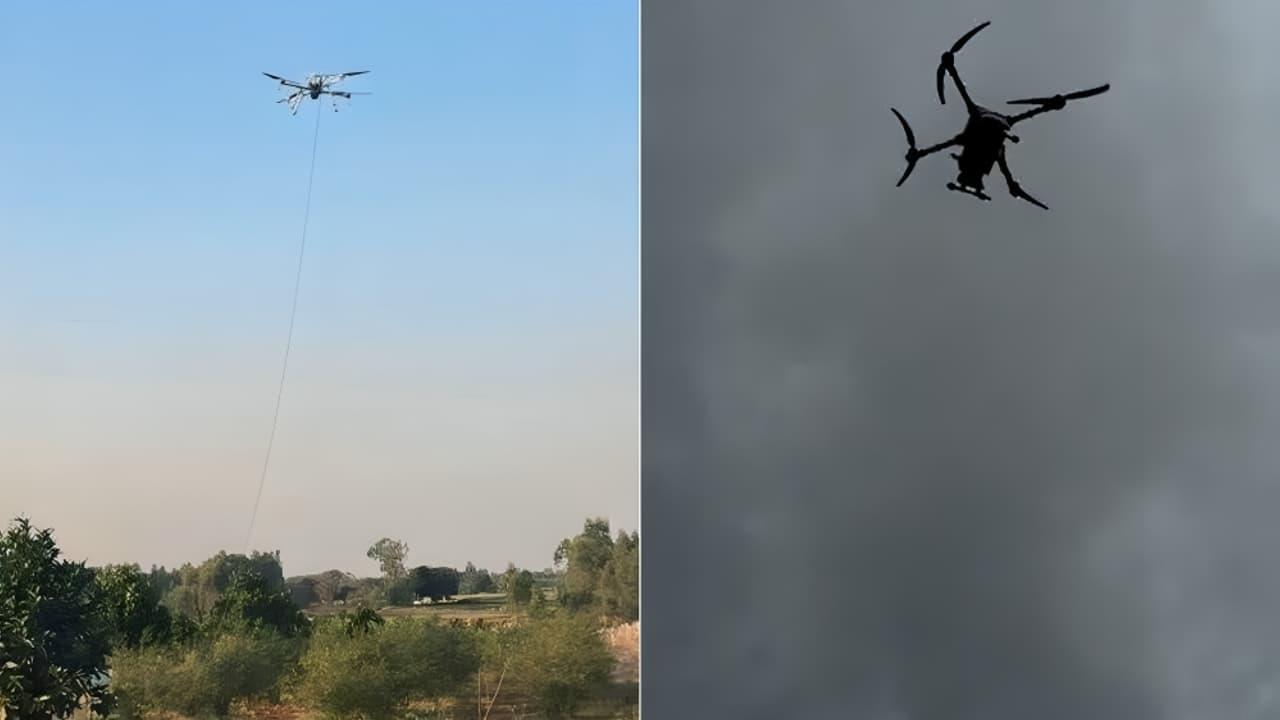Operation Sindoor Spurs Army Push For 5000 Tethered Surveillance Drones
New Delhi: In the aftermath of Operation Sindoor against Pakistan, wherein unmanned aerial vehicles (UAVs) were employed in the large numbers from both sides, the Indian Army has initiated the process to procure 5,000 tethered drone systems to be deployed in plains, deserts, high-altitude mountainous terrains for aerial surveillance purposes for long duration.
The Army, which has issued a request for information recently, wants complete delivery of the drone systems along with accessories within 24 months.
What are Tethered Surveillance Drones
A tethered drone system comprises drones that come with a ground-based tether station and can be used for surveillance of targets beyond the line of sight for a prolonged period. They can also be launched in an untethered mode for a certain duration to confirm inputs.
As per the RFI, these drone systems have been planned to be procured in the spirit of 'Make-in-India' and 'Aatmanirbhar Bharat' initiative. "These UAVs will support the Army's operations related to intelligence collection and surveillance, and enable persistent situational awareness around critical nodes, especially in high-altitude areas," an official said.
“... the tethered drone systems should be operational by day and night and in weather conditions in all kinds of terrains across the country, including humidity upto 75 percent, wind 35km/hour and visibility upto 500-m, in light rain and snow.”
Tethered Surveillance Drones' performance
It should be able to perform its task in temperature ranging minimum from 20 to minus 10 degree and maximum from 45-50 degree.
About design concept of the drone systems, the RFI states that it should be modular in design, to enable seamless upgradation, of individual components through simple modifications, not leading to design or structural change.
“It should also facilitate integration and installation as well as easy upgradation with future-tech, without impacting the performance of any system or sub-system.”
It should be capable of flying with tether height upto 100-m or above ground level (AGL) from the take-off point in tethered mode while in untethered mode, the aerial vehicle should be able to fly at a height of upto 1000-m (1-km) or more above AGL from the take-off point.
In tethered mode, the drone must have not less than 9 hours of endurance and minimum of 60 minutes of surveillance at maximum ranges in untethered mode. The system should be operated with one person with a mission range of not less than 10-km one way in untethered mode.
It should also have counter electronic warfare capability, and be compatible with GPS, satellite navigation systems and digital maps.
The Army has asked the vendors to submit their responses by November 2.
Legal Disclaimer:
MENAFN provides the
information “as is” without warranty of any kind. We do not accept
any responsibility or liability for the accuracy, content, images,
videos, licenses, completeness, legality, or reliability of the information
contained in this article. If you have any complaints or copyright
issues related to this article, kindly contact the provider above.
Market Research

- Gas Engine Market Analysis: Strong Growth Projected At 3.9% CAGR Through 2033
- Daytrading Publishes New Study On The Dangers Of AI Tools Used By Traders
- Excellion Finance Launches MAX Yield: A Multi-Chain, Actively Managed Defi Strategy
- United States Lubricants Market Growth Opportunities & Share Dynamics 20252033
- ROVR Releases Open Dataset To Power The Future Of Spatial AI, Robotics, And Autonomous Systems
- Blackrock Becomes The Second-Largest Shareholder Of Freedom Holding Corp.



















Comments
No comment